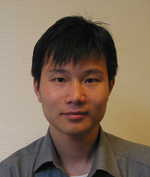PRIMATE CONSCIOUSNESS & COGNITION TEAM
The team is led by Béchir Jarraya (Professor at Université Paris-Saclay/UVSQ). It is part of the UNICOG Cognitive Neuroimaging Lab at Neurospin, a brain imaging center located on the CEA campus in the Paris region.
We primarily explore cognition and especially consciousness using advanced neuroimaging of the primate brain. To dissect the neural mechanisms of cognition and consciousness, we apply causal manipulations: pharmacological modulation of states of consciousness (using anesthetics), local pharmacological delivery (using local BBB opening with focused ultrasound), and brain stimulation techniques (DBS, tDCS, FUS). We also apply computational models and deep learning/AI to model our acquired neuroimaging data to infer new signatures of consciousness and new brain stimulation targets.
In a translational approach, we aim at clinical applications by developing new imaging-based signatures of consciousness and brain stimulation technologies to: (i) improve the understanding of anesthesia mechanisms and monitoring, (ii) improve the diagnosis and the treatment of coma and disorders of consciousness, (iii) improve the care of other neuropsychological and psychiatric conditions.
PRINCIPAL INVESTIGATORS AND SENIOR SCIENTISTS

Béchir JARRAYA – selected publications – publications
Béchir is the team leader. He is a full professor at the medical school (Université Paris-Saclay/UVSQ), principal investigator at NeuroSpin and neurosurgeon at Foch hospital. He is a member of the scientific board of the OpecST within the French Parliament (office parlementaire de l’évaluation des choix scientifiques et technologiques).

Qi ZHU – selected publications – publications
Qi is a principal investigator at NeuroSpin. His research focuses on ultra-high-resolution fMRI, visual perception, and focused-ultrasound-mediated blood-brain-barrier opening. He seeks to understand how our brain represents the external world and how the imperfect information encoded at the initial stage of the visual system is transformed into a rich subjective experience of the world. In particular, he aims to elucidate these cognitive processes at the fine spatial scale of cortical columns and layers, as well as across the entire cortex. To this end, he is developing ultra-high-resolution fMRI techniques at 7T and 11.7T. He also combines fMRI with other invasive recording techniques and non-invasive perturbation methods, such as focused-ultrasound-mediated blood-brain-barrier opening in macaque monkeys, to investigate the underlying neural mechanisms of fMRI activation and social behavior.

Guylaine HOFFNER – selected publications – publications
Guylaine is an Inserm neuroscientist with a background in genetics and biochemistry. She worked on neurodegenerative disorders (Huntington’s disease) at the Saint-Germain-des-Près campus and Polytech Paris-Saclay, before developing a great interest in consciousness and non-invasive brain neuromodulation techniques and joining Béchir’s team at Neurospin.
Using state-of-the-art neuroimaging tools, she aims to study the effects of established and innovative non-invasive brain stimulation techniques (NIBS, such as tDCS, tACS and new variants of these techniques) on brain activity and consciousness. She’s also interested in consciousness alterations in neuropsychological and psychiatric conditions.

Lynn UHRIG – selected publications – publications
POSTDOCTORAL FELLOWS

Alessandro BONGIOANNI – publications
Alessandro is a post-doc funded by INSERM with a background in cognitive neuroscience, as well as philosophy. He uses a combination of state-of-the-art imaging and causal techniques (such as focused ultrasound) to investigate brain mechanisms underlying decision-making and consciousness, and to address clinical disorders such as Parkinson’s disease and disorders of consciousness.
PhD STUDENTS
Elia DJABALLAH
Ulysse BOUREAU
RESEARCH ASSISTANTS

Pablo CASTRO – publications
Pablo is a CEA PhD candidate with a background in Computer Science and Computational Neuroscience & Neuroengineering. Working in close collaboration with Professor Alain Destexhe’s team at NeuroPSI, CNRS, his thesis’ main project is to use biologically realistic whole-brain simulation based on the mean-field theory of neuronal computation to reproduce signatures of consciousness, notably regarding resting-state activities’ differences between wakeful and unconscious states, and related to the propagation of activity throughout the brain during complex auditory stimuli.

